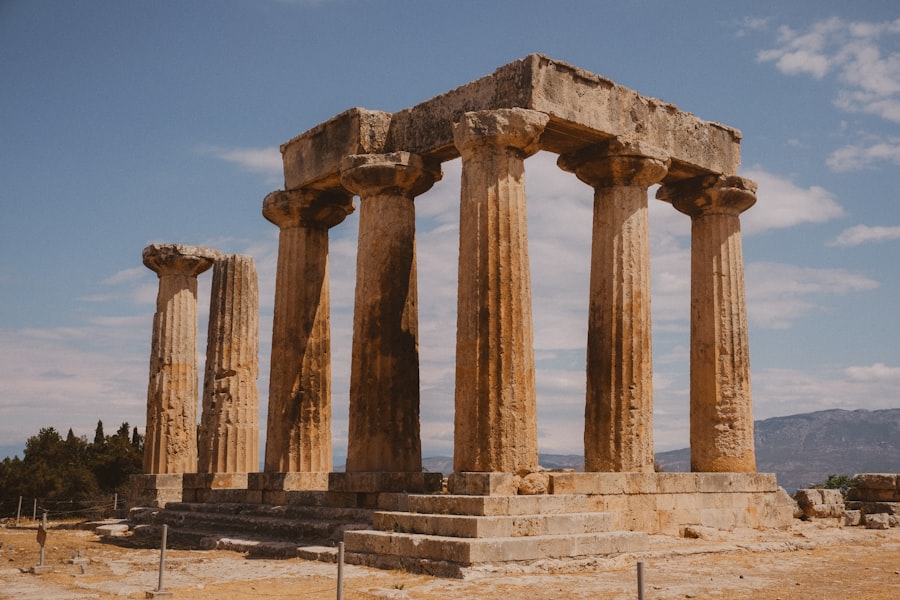Cultural heritage serves as the bedrock of human identity, encapsulating the traditions, values, and historical narratives that define communities and nations. It encompasses a vast array of elements, including languages, rituals, art forms, and architectural styles, all of which contribute to a collective memory that transcends generations. This rich tapestry of cultural expressions not only fosters a sense of belonging among individuals but also promotes social cohesion within diverse societies.
By understanding and appreciating our cultural heritage, we gain insights into the complexities of human experience, allowing us to navigate contemporary challenges with a deeper sense of empathy and awareness. The preservation of cultural heritage is thus not merely an act of safeguarding the past; it is an investment in the future, ensuring that the wisdom and creativity of previous generations continue to inform and inspire. Moreover, cultural heritage plays a pivotal role in economic development, particularly through tourism.
Many regions around the world rely on their unique cultural assets to attract visitors, who seek authentic experiences that connect them to local traditions and histories. This influx of tourists can stimulate local economies, create jobs, and foster community pride. However, the significance of cultural heritage extends beyond economic benefits; it also enriches our lives by providing a sense of continuity and stability in an ever-changing world.
In an age marked by globalization and rapid technological advancement, the preservation of cultural heritage becomes increasingly vital as it offers a counterbalance to the homogenization of cultures. By cherishing our diverse heritages, we not only honor our ancestors but also cultivate a more inclusive and vibrant global community.
Key Takeaways
- Cultural heritage is important for preserving the identity and history of a community or society.
- Threats to cultural heritage include natural disasters, urbanization, and human activities such as looting and vandalism.
- Strategies for preserving cultural heritage include documentation, conservation, and education to raise awareness.
- Technology plays a crucial role in preserving cultural heritage through digital archiving, 3D scanning, and virtual reality experiences.
- Preserving cultural heritage can have a positive impact on society by fostering a sense of pride, identity, and unity.
Threats to Cultural Heritage
Despite its undeniable importance, cultural heritage faces numerous threats that jeopardize its survival. One of the most pressing challenges is the impact of globalization, which often leads to the erosion of local customs and traditions in favor of a more homogenized global culture. As societies become more interconnected through technology and commerce, unique cultural practices may be overshadowed or replaced by dominant narratives that prioritize commercial interests over historical significance.
This phenomenon can result in the loss of languages, traditional crafts, and indigenous knowledge systems, leaving communities vulnerable to cultural disintegration. The consequences are profound; when a culture loses its distinctiveness, it risks losing its identity and the very essence that binds its members together. In addition to globalization, armed conflict and political instability pose significant threats to cultural heritage.
Throughout history, countless monuments, artifacts, and sites of historical importance have been destroyed or looted during times of war. The deliberate targeting of cultural heritage as a tactic of warfare not only inflicts physical damage but also inflicts psychological wounds on communities that see their history erased before their eyes. Furthermore, natural disasters such as earthquakes, floods, and climate change exacerbate these threats by damaging or destroying irreplaceable sites and artifacts.
The urgency to address these challenges cannot be overstated; without concerted efforts to protect cultural heritage from both human-made and natural threats, we risk losing invaluable pieces of our shared history forever.
Strategies for Preserving Cultural Heritage

To combat the myriad threats facing cultural heritage, a multifaceted approach to preservation is essential. One effective strategy involves the establishment of legal frameworks that protect cultural sites and practices from exploitation and destruction. Governments and international organizations must collaborate to create policies that recognize the intrinsic value of cultural heritage and provide mechanisms for its protection.
This includes designating UNESCO World Heritage Sites, which not only safeguards these locations but also raises awareness about their significance on a global scale. Additionally, local communities should be empowered to take an active role in preserving their own heritage through education and advocacy initiatives that promote awareness of cultural practices and their importance. Another crucial strategy for preserving cultural heritage is documentation and archiving.
In an age where digital technology offers unprecedented opportunities for recording and sharing information, it is imperative to utilize these tools to create comprehensive records of cultural practices, languages, and artifacts. This can involve everything from digitizing manuscripts and oral histories to creating virtual museums that allow global audiences to engage with diverse cultures from afar. By documenting cultural heritage in various forms—be it through photography, video recordings, or written accounts—we can ensure that even if physical manifestations are lost, their essence remains accessible for future generations.
Furthermore, fostering partnerships between academic institutions, local communities, and cultural organizations can enhance these efforts by pooling resources and expertise.
The Role of Technology in Preserving Cultural Heritage
| Technology | Role in Preserving Cultural Heritage |
|---|---|
| 3D Scanning | Allows for detailed digital preservation of artifacts and historical sites |
| Virtual Reality | Enables immersive experiences of cultural heritage sites for education and preservation |
| Digital Archives | Provides a secure and accessible way to store and share cultural artifacts and documents |
| Augmented Reality | Enhances on-site experiences by overlaying digital information onto physical artifacts |
| Remote Sensing | Allows for non-invasive monitoring and conservation of cultural sites and landscapes |
Technology has emerged as a powerful ally in the quest to preserve cultural heritage in innovative ways. Digital tools such as 3D scanning and modeling allow for the creation of virtual replicas of artifacts and sites, enabling people to experience them without the risk of physical damage or degradation. These technologies not only facilitate preservation but also enhance accessibility; individuals who may never have the opportunity to visit a particular site can engage with it through virtual reality experiences or interactive online platforms.
This democratization of access fosters a greater appreciation for diverse cultures while simultaneously raising awareness about the importance of preservation efforts. Moreover, social media platforms have revolutionized how communities share their cultural narratives with the world. By harnessing the power of storytelling through blogs, videos, and social media posts, individuals can highlight their unique traditions and practices, fostering a sense of pride and ownership over their heritage.
This grassroots approach not only empowers communities but also encourages dialogue between cultures, promoting mutual understanding and respect. As technology continues to evolve, it will undoubtedly play an increasingly vital role in shaping how we document, share, and preserve our cultural legacies for future generations.
The Impact of Preserving Cultural Heritage on Society
The preservation of cultural heritage has far-reaching implications for society as a whole. At its core, it fosters a sense of identity and belonging among individuals within a community. When people engage with their cultural heritage—whether through festivals, traditional crafts, or storytelling—they reinforce their connections to one another and to their shared history.
This sense of belonging can be particularly crucial in multicultural societies where diverse backgrounds intersect; by celebrating various heritages together, communities can cultivate mutual respect and understanding. In this way, preserving cultural heritage becomes a means of promoting social harmony and cohesion in an increasingly fragmented world. Furthermore, the act of preserving cultural heritage can serve as a catalyst for social change.
By recognizing the value of diverse traditions and practices, societies can challenge dominant narratives that marginalize certain groups or histories. This process not only empowers underrepresented communities but also enriches the broader societal narrative by incorporating multiple perspectives. In this context, cultural heritage preservation becomes an avenue for dialogue about social justice and equity; it encourages individuals to reflect on their own identities while fostering empathy for others.
Ultimately, when societies prioritize the preservation of cultural heritage, they lay the groundwork for a more inclusive future where all voices are heard and valued.
Engaging the Community in Cultural Heritage Preservation

The Importance of Community Engagement
Community engagement is crucial in any effort to preserve cultural heritage effectively. Local communities are often the custodians of their own histories; they possess invaluable knowledge about their traditions, practices, and artifacts that cannot be replicated by external entities. Therefore, involving community members in preservation initiatives not only ensures that efforts are culturally sensitive but also fosters a sense of ownership over their heritage.
Empowering Communities through Education and Collaboration
Workshops, educational programs, and collaborative projects can empower individuals to take an active role in documenting and sharing their cultural practices while also passing down knowledge to younger generations. Moreover, engaging communities in preservation efforts can lead to innovative solutions that address contemporary challenges while honoring traditional practices. For instance, local artisans may develop sustainable methods for crafting traditional goods that appeal to modern consumers while preserving age-old techniques.
Preserving Cultural Legacies through Innovation
By bridging the gap between tradition and innovation, communities can create new opportunities for economic development while ensuring that their cultural legacies endure. This collaborative approach not only strengthens community bonds but also enhances resilience against external pressures that threaten cultural heritage.
Building a Sustainable Future
Ultimately, community-led preservation initiatives can lead to a more sustainable future for cultural heritage. By working together, communities can protect their cultural legacies while also driving economic growth and social development.
The Future of Cultural Heritage Preservation
As we look toward the future of cultural heritage preservation, it is clear that adaptability will be key in navigating an ever-changing landscape marked by technological advancements and shifting societal values. The integration of technology into preservation efforts will continue to evolve; emerging tools such as artificial intelligence may offer new ways to analyze and interpret cultural data while enhancing accessibility for diverse audiences. However, it is essential that these advancements are implemented thoughtfully and ethically—ensuring that they serve to amplify marginalized voices rather than overshadow them.
Furthermore, fostering global collaboration will be crucial in addressing the challenges facing cultural heritage preservation today. As threats such as climate change and armed conflict transcend national borders, international cooperation will be necessary to develop comprehensive strategies for safeguarding our shared human legacy. By working together across cultures and disciplines—combining expertise from historians, archaeologists, technologists, and community leaders—we can create a more holistic approach to preservation that honors both local traditions and global interconnectedness.
Ultimately, the future of cultural heritage preservation lies in our collective commitment to valuing diversity while recognizing our shared humanity—a journey that requires both vigilance and celebration as we strive to protect the stories that define us all.
If you’re interested in exploring more about cultural heritage and its significance, you might find valuable insights on the APEAI website. They offer a range of articles and resources that delve into various aspects of cultural preservation and education. To learn more about how cultural heritage is being preserved and celebrated around the world, visit their main page here. This resource can provide you with a deeper understanding of the importance of maintaining cultural legacies for future generations.
FAQs
What is cultural heritage?
Cultural heritage refers to the physical artifacts and intangible attributes of a group or society that are inherited from past generations, maintained in the present, and passed on to future generations. This can include traditions, customs, monuments, historic buildings, art, and other aspects of a society’s history and identity.
Why is cultural heritage important?
Cultural heritage is important because it helps to define and preserve a society’s identity, history, and traditions. It also plays a crucial role in promoting social cohesion, fostering a sense of belonging, and contributing to the overall well-being of communities. Additionally, cultural heritage can be a source of economic development through tourism and creative industries.
How is cultural heritage preserved?
Cultural heritage is preserved through a variety of means, including conservation and restoration efforts for physical artifacts, documentation of intangible heritage such as oral traditions and rituals, and the promotion of cultural education and awareness. International organizations, governments, and local communities all play a role in the preservation of cultural heritage.
What are the threats to cultural heritage?
Cultural heritage faces a range of threats, including natural disasters, urban development, armed conflict, looting, and neglect. Climate change and environmental degradation also pose significant risks to cultural heritage sites and artifacts.
What is the role of UNESCO in cultural heritage preservation?
The United Nations Educational, Scientific and Cultural Organization (UNESCO) plays a key role in the preservation of cultural heritage through its World Heritage program, which identifies and protects sites of outstanding universal value. UNESCO also works to safeguard intangible cultural heritage and promote international cooperation in the field of cultural preservation.









